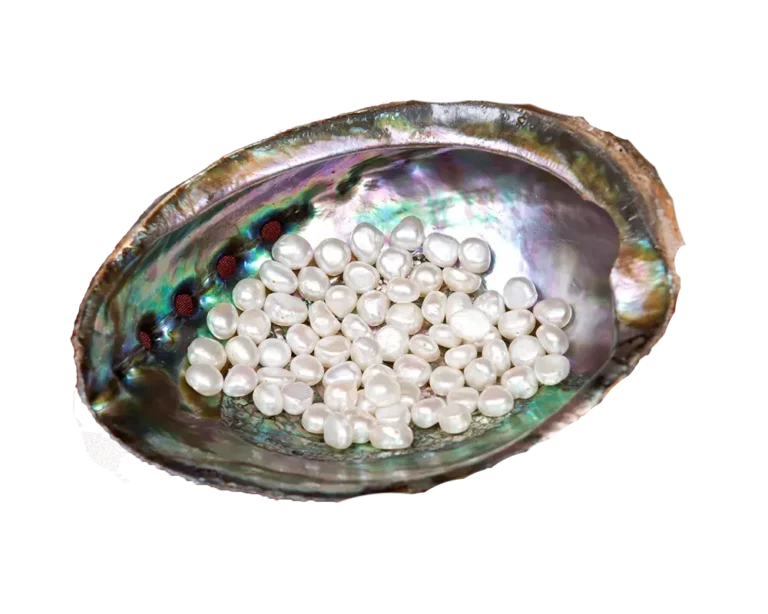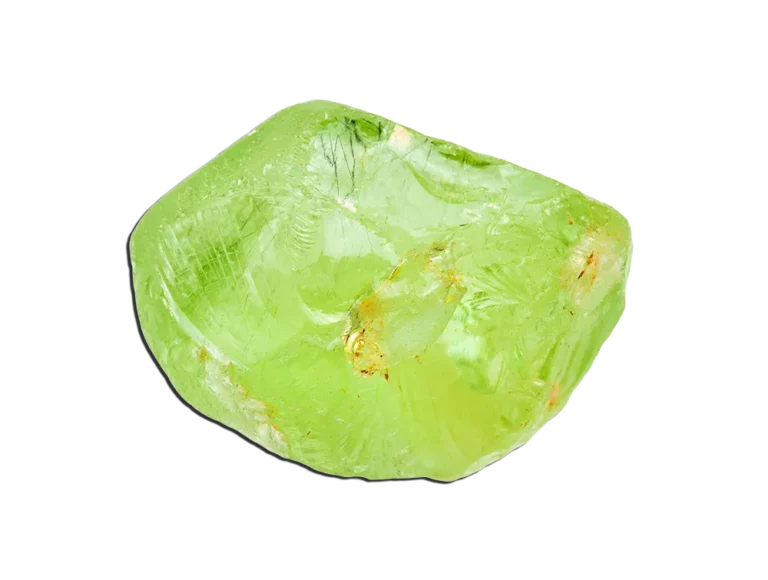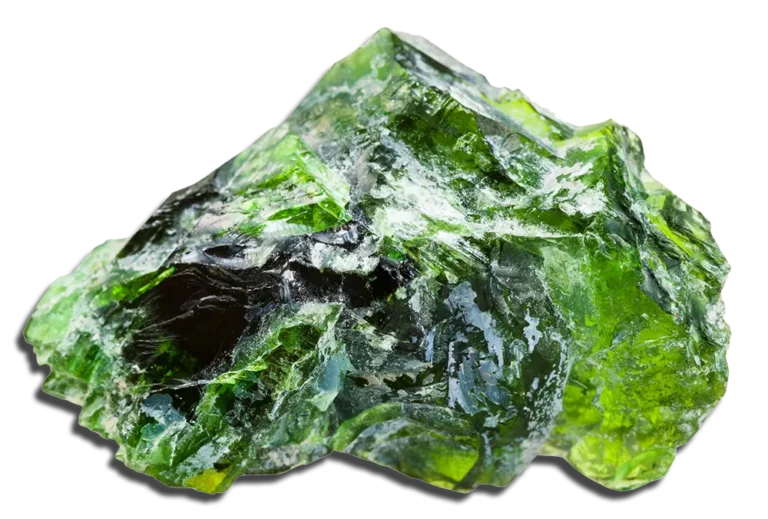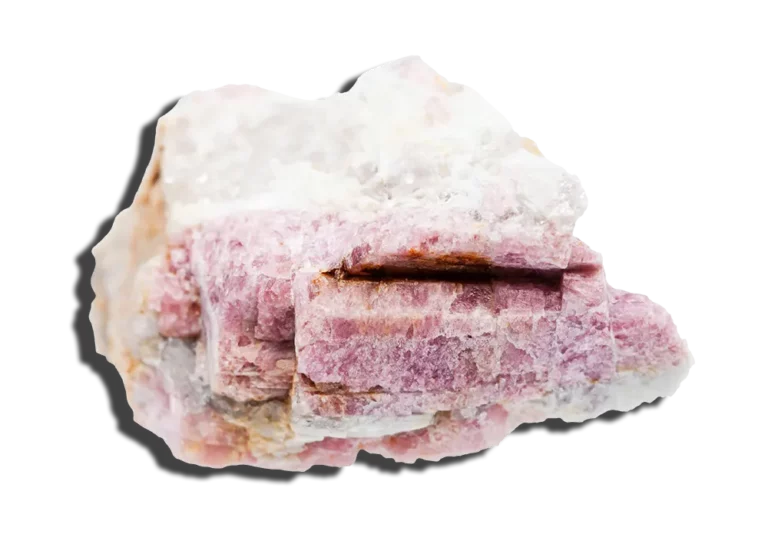Ethiopian Opal Stone: Properties, Benefits & Meanings
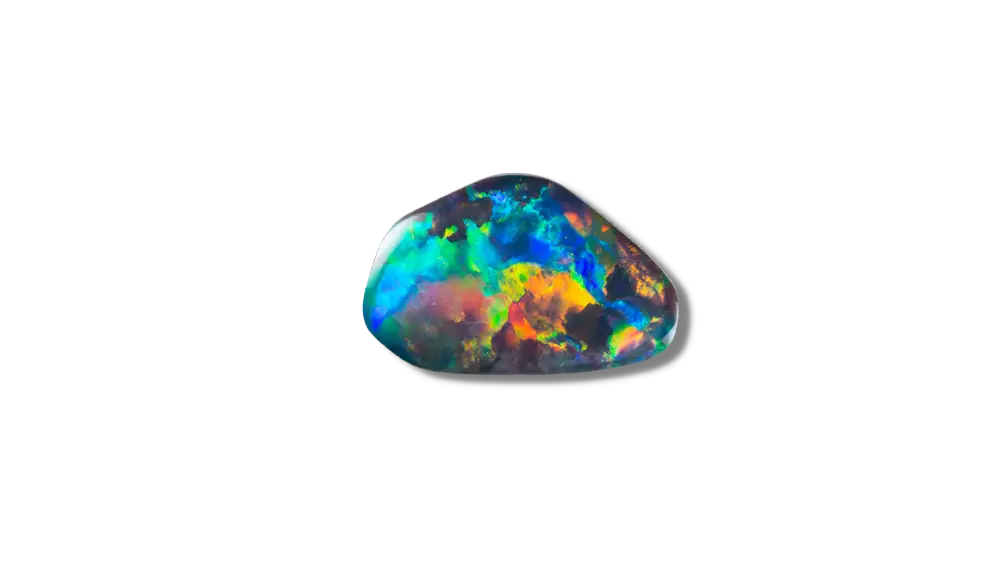
Ethiopian Opal Stone Overview
Ethiopian Opal Stone is an opaque, white, and milky translucent stone with a distinct play of color. The name Ethiopian Opal was derived from the fact that it comes from Ethiopia, Africa. Its origin and beautiful colors make it a highly desirable item for collectors and casual enthusiasts.
This semiprecious stone is known for its bright and eye-catching blue color, but it can also be seen in yellow, orange, green, red, and brown.
This article will take a look into the properties, meanings, and uses of the Ethiopian opal stone.
What Is An Ethiopian Opal Stone?
Ethiopian opal stones are found in the Welo opal fields in Ethiopia. They are known for their watery appearance, resulting from the way light reflects off of their surface.
Their most common colors include green and blue, with brown streaks running through them. Ethiopian opals have been valued since ancient times because they have been used as jewelry and amulets by many cultures throughout history.
Ethiopian Opal Stone Appearance
Ethiopian opal stones are known for their fire and play-of-color. They reflect light beautifully and have an almost hypnotic effect on people who view them. This is why they are often used in jewelry making or home decorating.
Opal gemstones are usually opaque, but some stones contain thin layers of water trapped within the stone. If you shine a light through the stone, you will see a rainbow pattern called “opal fire.”
The opal fire can be seen from both sides of the stone; this is called “doublet” or “doublets”. The color of an opal depends on several factors: its color spectrum, how dark it is, and whether there are any flaws in it.
Mining
Mining is a difficult and labor-intensive process. All mining in Ethiopia is done by hand with picks and shovels, making it one of the world’s least efficient ways to mine opals. Because there is no incentive for efficiency or innovation, this method has remained unchanged for centuries—and it’s not likely to change anytime soon.
In addition to being inefficient and outdated, mining for Ethiopian opals is dangerous work for these reasons:
- Logs have fallen on miners during rainstorms.
- Falling rocks have killed people.
- Tunnels collapse due to poor construction.
- Workers get stuck under rockfalls or cave-ins.
- Explosions go off unexpectedly due to underground methane gas (which can even result in death).
Varieties of Ethiopian Opal
The kinds of Opal sourced from Ethiopia include:
Precious Opal: Precious Opal is a type of Ethiopian Opal. It has a range of colors, which include black, red, and white, as well as green and yellow.
Fire opal, also known as “Welo” Opal: Fire opal is a variety of mineraloid opal. Fire opals from Ethiopia tend to be bright orangey-red and have a distinct appearance compared to other types of fire opals.
This fire opal was first discovered in Australia and has since been found in other parts of the world, including Africa (Ethiopia). The Australian variety is not as bright or colorful as the Ethiopian variety. However, it has similar properties, such as producing light when placed under sunlight or another bright light source.
Hydrophane opals: Hydrophane opal is a rare type of Opal that can absorb water. It gets its name from the Greek word “hydro,” meaning water, and “phane,” meaning stone.
The way it’s formed is similar to how pearls are made, but in this case, the layers of opalite (the mineral) are deposited around a sponge-like core instead of calcium carbonate.
Opalite is a silicate of water, meaning its physical properties change depending on how much water is present. When hydrophane opal is dry, it’s colorless or white, but when it’s submerged in water for a few minutes, its color changes to bright blue or green.
The opalite layers are also porous so that they can absorb and store water vapor from the air. Unfortunately, this causes them to become cloudy if they’re left out too long without being used.
Physical Properties
| Mineral Group | Opal |
| Formula | SiO 2 -nH 2 O |
| Chemical name | Hydrated silica |
| Color | Many |
| Hardness (Mohs scale) | 5.5-6 |
| Refractive Index | 1.430 to 1.465 |
| Fracture | Conchoidal |
| Luster | Vitreous |
| Specific Gravity | 1.98 – 2.20 |
| Transparency | Transparent to Opaque |
Ethiopian vs. Australian Opal
Ethiopian opal stones are mined in Ethiopia, while Australian opals are mined in Australia. The two countries have very different geographies, so naturally, their stones will have other properties. Australian Opal is mined from the ground, and Ethiopian Opal comes from large volcanic deposits.
Both opals are known for their bright play of colors and for being firey (the way they sparkle). Ethiopian Opal has fewer impurities than Australian Opal and tends to be more translucent with deeper color saturation.
Ethiopian prices are lower and are less common than Australian Opals. In addition, Ethiopian Opal is more durable, resisting breakage better than all other Opals.
Ethiopian Opal is comparatively easy to work with and facet. It also has a lower specific gravity.
Ethiopian Opal stone is a hydrophane. Hydrophane is a term used to describe an opal that absorbs water and becomes cloudy. This happens because the Opal contains water in its molecular structure, which makes it more fragile.
Australian Opals are not hydrophane but have higher water content.
Where Can You Find Ethiopian Opal?
Ethiopia is the second primary source of opals in the world, after Australia. They are found in the following regions:

How is It Formed?
Ethiopia’s opal stones are formed the same way most other Opal types are created: igneous rock being exposed to a source of heat and water, which causes the silica to dissolve.
The Ethiopian Opal formation begins when volcanic lava flows through cracks in the Earth’s crust and onto its surface. This lava cools down and hardens into rock over time but remains porous enough to allow water to pass through it. As this happens, silica-rich groundwater seeps through the cracks in the rock where it meets air molecules and becomes trapped inside tiny cavities within the rock structure itself.
As this continues over many thousands or millions of years, more layers are added to each other until we end up with what we know today as Ethiopian Opal. This beautiful glass-like jewel has been polished into various shapes and sizes by nature itself!
History
Ethiopian Opal stone was first discovered in the early 1990s and was an instant hit with collectors. It’s a precious stone that can also be found as semiprecious under certain conditions.
How To Tell If A Ethiopian Opal Is Real?
Ethiopian Opal is a beautiful stone that has a lot of history. If you think you might want to buy Ethiopian Opal, here are some tips for telling if it’s real or not:
1) Color: Ethiopian Opals come in many colors—usually blue, green, red, or orange—but aren’t typically yellowish or brownish. So if your Ethiopian Opal seems to have a strange color, it might not be authentic.
2) Pattern: If the pattern is too perfect or regular, it’s probably not real. Natural Ethiopian opals have flaws that are not even and are not symmetrical.
3)Shape: The shape should be irregular as well. A genuine opal will not be a perfect oval.
4)Flaws: If there are no flaws on your Ethiopian Opal stone —especially in the pattern—it’s probably not authentic. Opals are known for having cracks and fractures throughout their surfaces; they can occur anywhere on an opal’s surface (even within its pattern). A flawless opal is very rare and very expensive.
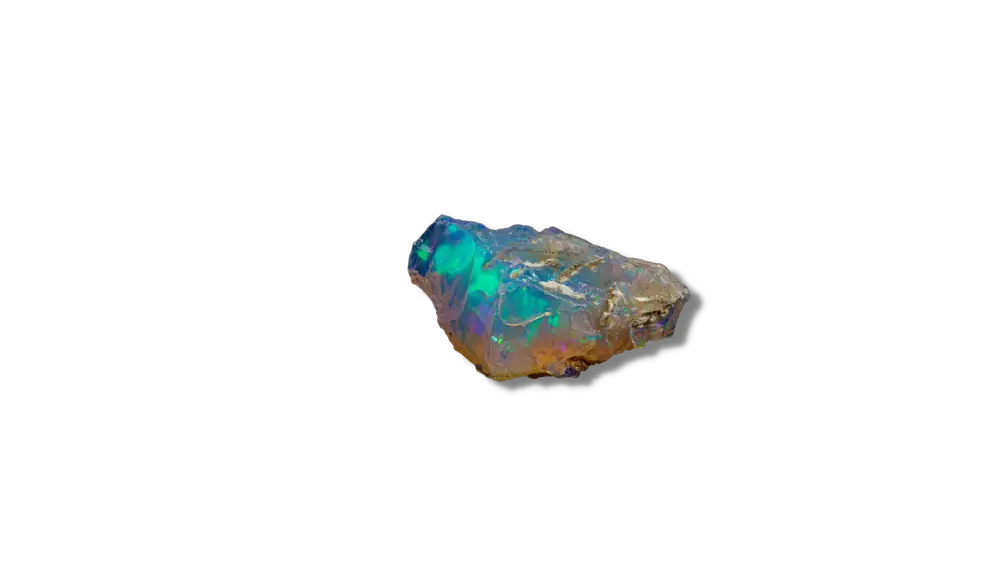
Ethiopian Opal Value
Because it is less valuable than Australian Opal, Ethiopian Opal stone is priced on a per-piece basis. The most valuable type is Black Opal, which displays the most vibrant shine and color.
The least valuable kind of Ethiopian Opal is the white Opal because it does not have as much depth or shine as other types of opals.
Ethiopian Opal has been known to have a value that ranges from $40-$60 per carat up to $100 per carat, depending on its quality and size.
Size: The larger the stone, the more valuable it will be.
Quality: The quality of Ethiopian Opal depends on the amount of play of light it has and how pure its color is. Some Ethiopian opals are more transparent than others; this will affect their price because more transparent stones are more expensive than less-transparent ones.
Cut: Ethiopian Opal is known for its unique color play and the fact that it can be cut in many different shapes. The most common way to cut Ethiopian Opal is as a cabochon (a rounded shape with no facets), but other shapes include ovals, rounds, rectangles, and even hearts.
Uncut pieces are less valuable than those cut into jewelry.
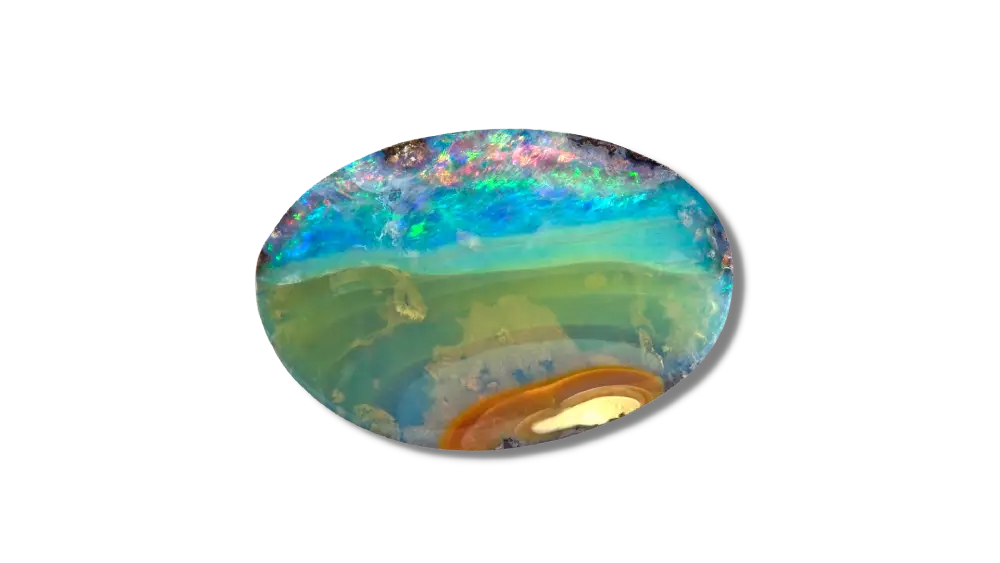
Chakra Connection
The color of Opal is also linked to the third eye chakra, which governs our intuition. The third eye is located in the center of the forehead and is associated with a deep blue or indigo color.
This chakra plays an essential role for those who are interested in psychic work or wish to develop their sense of self-knowledge. The presence of this stone may help you connect with your inner voice and gain access to information that comes from outside sources such as books or other people’s lives.
The Opal has long been considered a stone that can bring good luck, but it also brings emotional balance and healing at all levels—physical, mental, and spiritual. Opals carry intense energy that stimulates both personal growth and creativity. They can open up our innermost beings so we can experience ourselves more fully through all aspects of life.
Opals are often called “stone children” because their colorful appearance reminded us of our own inner childlike wonderment when we were younger–a time when everything seemed possible!
Metaphysical Properties
Ethiopian opals is said to bring love, luck, and prosperity to the wearer. They’re also used for protection from negative energy and healing.
These gems are thought to be potent healers, as they can help you align your physical and spiritual selves. They are also believed to contain the ability to cleanse, energize, and purify the aura.
They are excellent for bringing peace of mind, calming emotions, and relieving stress. They can also stimulate creativity and imagination, which makes them great for artists, writers, musicians, or anyone else who uses their imagination in their work.
A beautiful Ethiopian opal stone is thought to bring balance to your life by helping you see things from all angles—not just one—so that you can make informed decisions that will benefit everyone involved.
This Opal is a stone of self-acceptance, encouraging you to embrace yourself as you are. It has a calming and soothing effect and can help you feel more grounded and aligned with your true nature.
Furthermore, Ethiopian Opal stone is said to help you connect with spirit guides, angels, and other mystical beings.
It’s also been used in healing rituals throughout history. For example, in ancient Egypt, many people believed that carrying a piece of Ethiopian Opal would bring them good luck and prosperity.
Ethiopian Opal Uses
Ethiopian opals are one of the rarest and most beautiful types of Opal.
They have been used in jewelry since at least the time of ancient Egyptians. Many types of jewelry have been made using this type of stone throughout history; however, today, it is primarily used for rings and bracelets.
They are also highly valued by collectors who buy them for their rarity and beauty.
For people who love the look of Ethiopian opals but don’t have a lot of money to spend on a piece of fine jewelry or collectible, there are other ways to incorporate them into their lives.
For example, you can use inexpensive opals as accents in your home décor or an Ethiopian Opal pendant on a necklace for everyday wear.
Ethiopian Opal stone is sometimes used as an ornamental stone for decorative objects because of its unique look and beauty; however, it isn’t very hard or durable enough for use in large-scale applications such as building materials or industrial use.
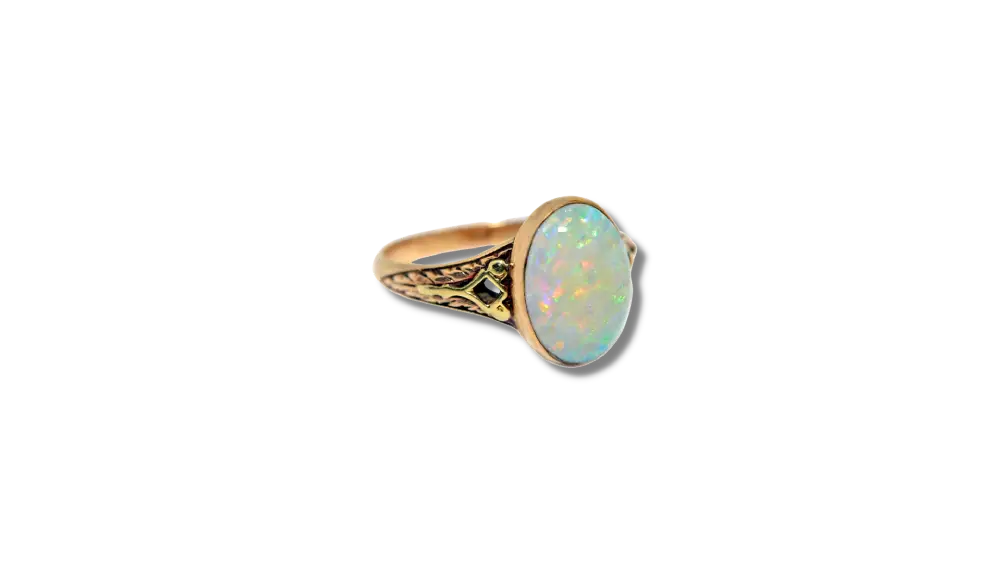
How To Take Care Of Ethiopian Opal Jewelry?
The best way to keep your Ethiopian Opal stone looking terrific is by keeping it clean! Here are some tips to keep your Opal shiny and beautiful:
1) Do not clean with water or ultrasonic cleaner – this can cause discoloration or damage to the stone.
2) Use a dry and clean cloth – if you find that your stone needs more cleaning than just wiping with a cloth, use an alcohol-free polishing cloth to remove any dirt or dust particles that may have gotten stuck between the layers of your stone.
3) Burn white sage or other cleansing materials to remove any leftover negative energy
FAQs
Is Ethiopian Opal a Birthstone?
Opal is the birthstone of October.
Ethiopian opals have a bright, translucent appearance that makes for a beautiful gemstone to keep on your finger or hang from your neck. They are an excellent gift for anyone born in October. They can be found in shades of blue, green, yellow, and orange and are known for their fiery color and rich luster.
Are Ethiopian opals good quality?
Ethiopian opals are some of the best quality opals you can find. They come in various colors, including black, red, blue, green, yellow, and orange. Ethiopian opals have a beautiful play of color that makes them stand out from other opals.
They are also some of the most affordable opals on the market today. They are priced lower than Australian opals and are much less expensive than most other types of precious stones and jewelry items.
Is Buying Ethiopian Opal a good investment?
Ethiopian opals are a good investment. Their has increased over the last few years and is expected to continue to grow.
When you’re looking to invest in Ethiopian Opal, it’s essential to know what you’re getting into. These gems can come in various colors, including blue, green, orange, pink, red, and white.
The most valuable Ethiopian opals are those with a high amount of fire (the bright color plays when light hits the stone) and luster (the amount of brilliance on the surface). The more intense the space of color on your Ethiopian Opal and the more reflective its surface is, the more valuable it will be.
Ethiopian Opals’ rarity means they will continue to be sought after by collectors and investors alike.
What happens if you get Ethiopian Opal wet?
The first thing that happens when you get Ethiopian Opal wet is that it loses its luster. This means that it won’t look as shiny, bright, or colorful as it used to be after you get it wet.
If you don’t dry your Ethiopian Opal quickly enough, it will also become discolored and lose some of its colors. The longer you leave it wet, the more damage it will do.
The best way to keep Ethiopian opals looking good is to ensure they don’t get wet in the first place! If you do happen to get one damp and it loses its luster or gets discolored, then try cleaning off any water droplets with a soft cloth and letting the stone air-dry for several hours before handling again.


